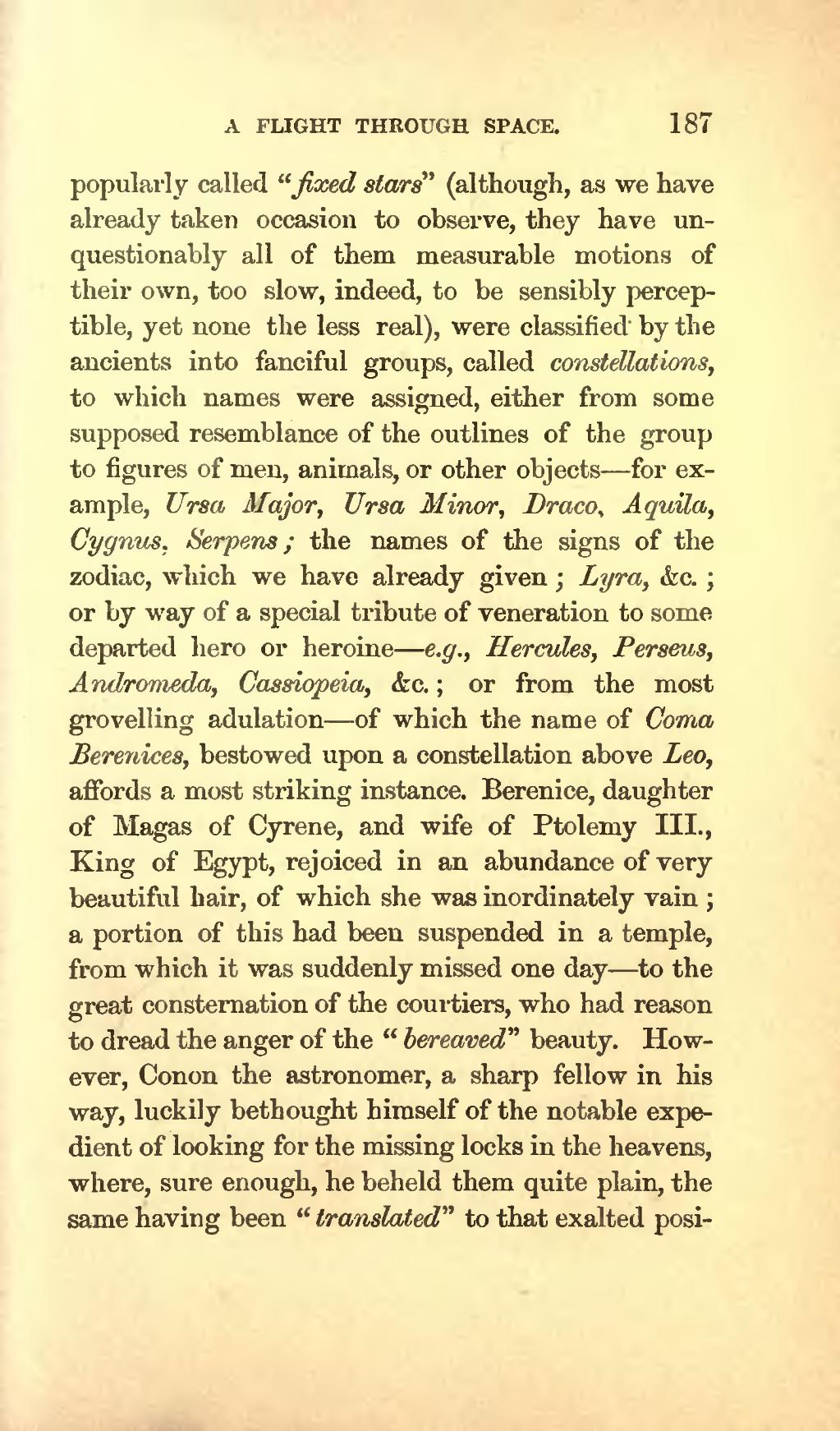popularly called “fixed stars” (although, as we have already taken occasion to observe, they have unquestionably all of them measurable motions of their own, too slow, indeed, to be sensibly perceptible, yet none the less real), were classified by the ancients into fanciful groups, called constellations, to which names were assigned, either from some supposed resemblance of the outlines of the group to figures of men, animals, or other objects—for example, Ursa Major, Ursa Minor, Draco, Aquila, Cygnus, Serpens; the names of the signs of the zodiac, which we have already given; Lyra, &c.; or by way of a special tribute of veneration to some departed hero or heroine—e.g., Hercules, Perseus, Andromeda, Cassiopeia, &c.; or from the most grovelling adulation—of which the name of Coma Berenices, bestowed upon a constellation above Leo, affords a most striking instance. Berenice, daughter of Magas of Gyrene, and wife of Ptolemy III., King of Egypt, rejoiced in an abundance of very beautiful hair, of which she was inordinately vain; a portion of this had been suspended in a temple, from which it was suddenly missed one day—to the great consternation of the courtiers, who had reason to dread the anger of the “bereaved” beauty. However, Conon the astronomer, a sharp fellow in his way, luckily bethought himself of the notable expedient of looking for the missing locks in the heavens, where, sure enough, he beheld them quite plain, the same having been “translated” to that exalted posi-
Page:The fairy tales of science.djvu/223
This page has been validated.
A FLIGHT THROUGH SPACE.
187
